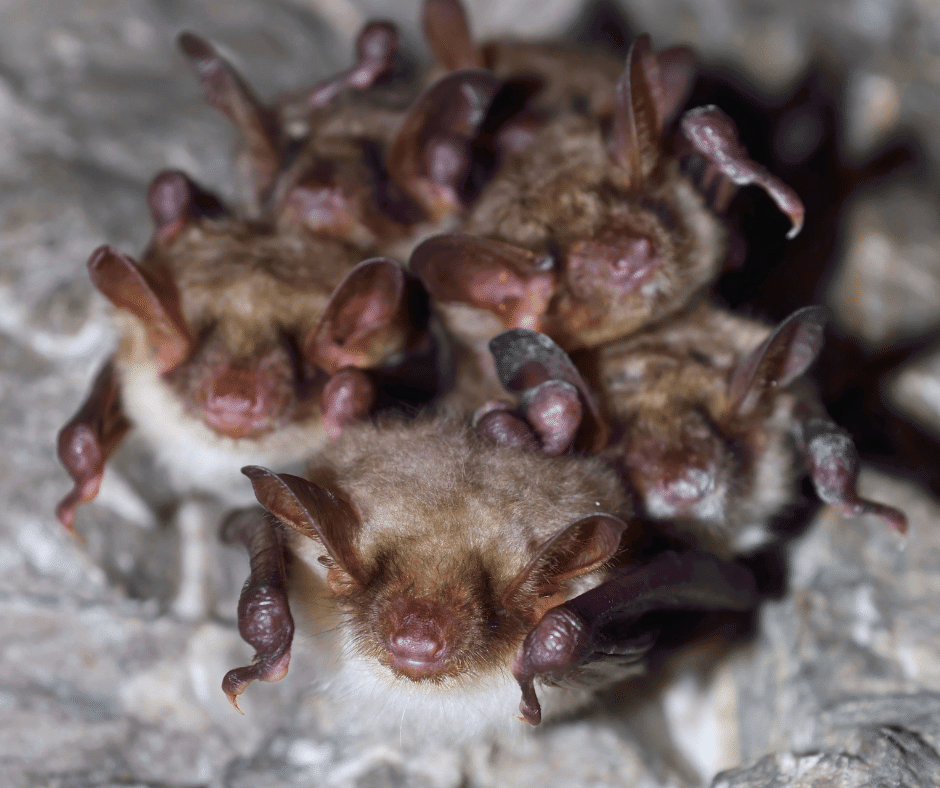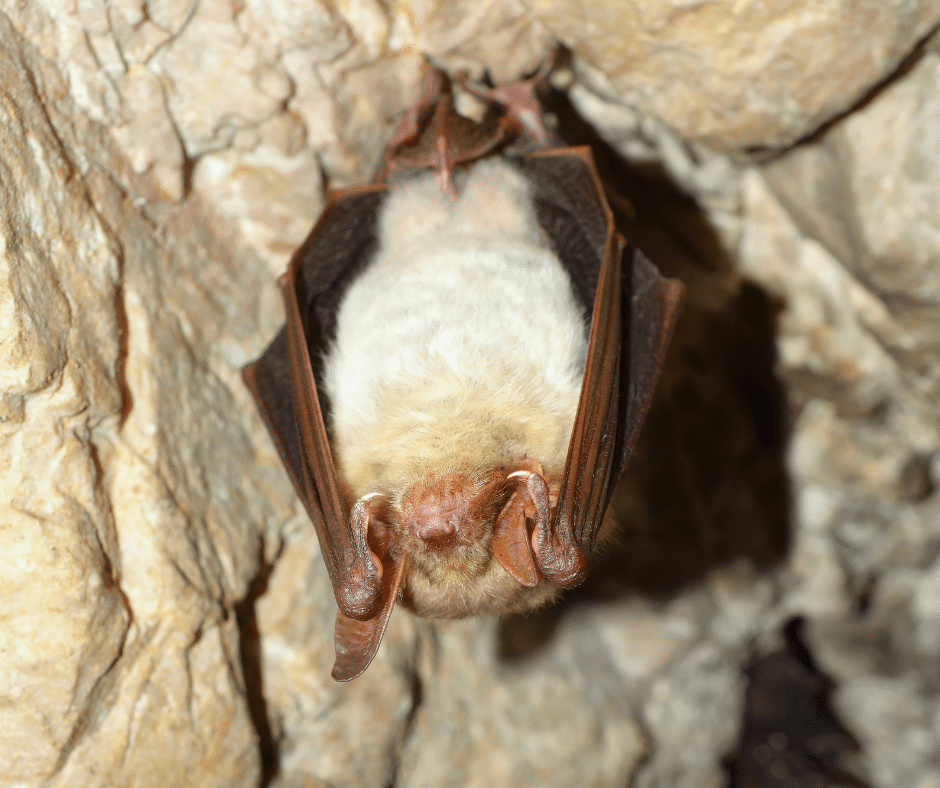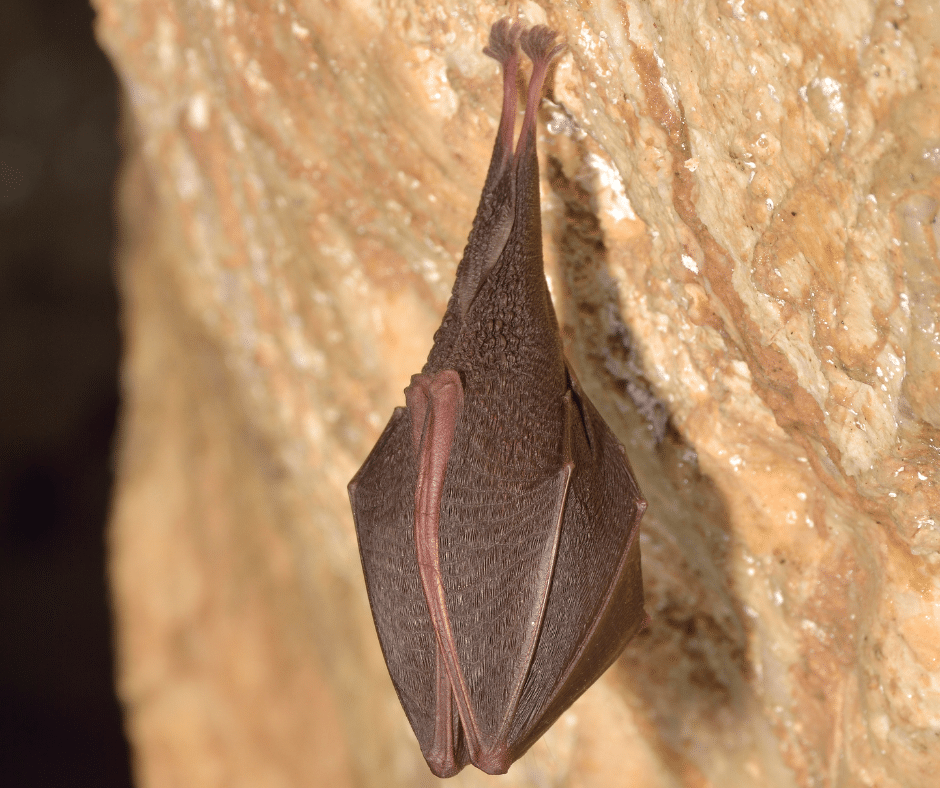Welcome to learning more about the Southeastern Myotis Bat. These bats are particularly important to recognize, as their population is in decline. Located in the southeastern parts of the United States, this variety of bats is threatened by cave vandalism, floods, and insecticides. In addition, the predators of these bats include humans, rat snakes, corn snakes, opossums, and owls.
This little bat is on the Species of Concern list. To keep the Southeastern Myotis Bat around, more studies are needed. For now, cave roosts should be protected.

Southeastern Myotis Bat Facts
Southeastern Myotis Bats have one distinguishing attribute that is unique to this variety. They have long toe hairs that extend beyond their claws. And with their large hind feet, pink nose, and thick wooly fur, they are quite a sight. And in the summer, most of these bats take on a russet color.
Oh, and the bat happens to be the only mammal that can fly. Besides, they are more maneuverable in flight than birds.
- Wingspan: 9 to 11 inches
- Size: 3.5 – 4 inches
- Weight: 5 – 8 grams
- Life Span: around 4 – 8 years
Southeastern Myotis Bat Behavior:
They are the bats you might find in caves, bridges, mines, old buildings, and tree hollows. If you care near a lake or stream, you may see them fly out at night in their rapid and steady flight.

Diet:
This variety of bat is insectivorous, emerging after dark to hover over water in search of food. And the insects they catch in flight include midges, mosquitoes, craneflies, beetles, moths, and more.
One of the most exciting bat facts remains how they use ultrasonic signals, called echolocation, to locate objects in the dark. Indeed, echolocation is how they navigate the world at night and look for food.
With echolocation, the Southeastern Myotis Bat helps to control the mosquito population as we sleep. So, keeping these creatures around is imperative.
Reproduction:
Southeastern Myotis Bat roosting season is from mid-April to August. Gestation lasts 2 months, and each mother has one to two pups per year. And unlike other bat species, they are known to have twins.
Southeastern Myotis Bat Damage to the Home
If a Southeastern Myotis Bat has nested in your attic, there can be extensive damage done. Then, If they do manage to trap themselves in your attic, here is what you may see.
- Nightly noises such as clicking, popping, and scratching as bats move around.
- Large quantities of bat droppings (guano) in your attic or loft.
- A strong toxic smell that is like ammonia.
- Dark stains around small holes in your home.
- Bats flying from your home at dusk.
Worst of all would be the smell of the giant pile of urine and droppings. No one wants that from a colony of Southeastern Myotis Bats. What’s more, bats typically are not alone. So if you see a solo bat in the barn or your home’s attic, there are most likely others hanging around.

Get Rid of the Southeastern Myotis Bat Infestation
You can trust the professionals at Covenant Wildlife Removal to get rid of the Southeastern Myotis Bats for good. They can do the patch and prevention work for you. Then they help to encourage the bats out safely and humanely, so they can relocate.
At Covenant Wildlife Removal, we will remove the bats, find the entry points and seal them up, and finally, clean up after them. We are fully equipped and experienced at getting to the source of the problem and eradicating the wildlife.
Southeastern Myotis Bat Removal Service includes:
- Exclusion
- Clean Up
- Disinfection
- Odor Removal
- Repair of the area
If you suspect you have bats in your attic or on your property, let Covenant Wildlife Removal assist you with bat removal. We are a top-rated local family-owned, full-service wildlife trapping, removal, and damage repair service company. Fortunately, our professionals can remove a bat infestation before it becomes a massive problem for you and your family. And we provide humane and safe bat removal services in Jefferson and Shelby counties. Contact us to set up an inspection.
Contact us or call 205-850-5760 to set up an inspection.
